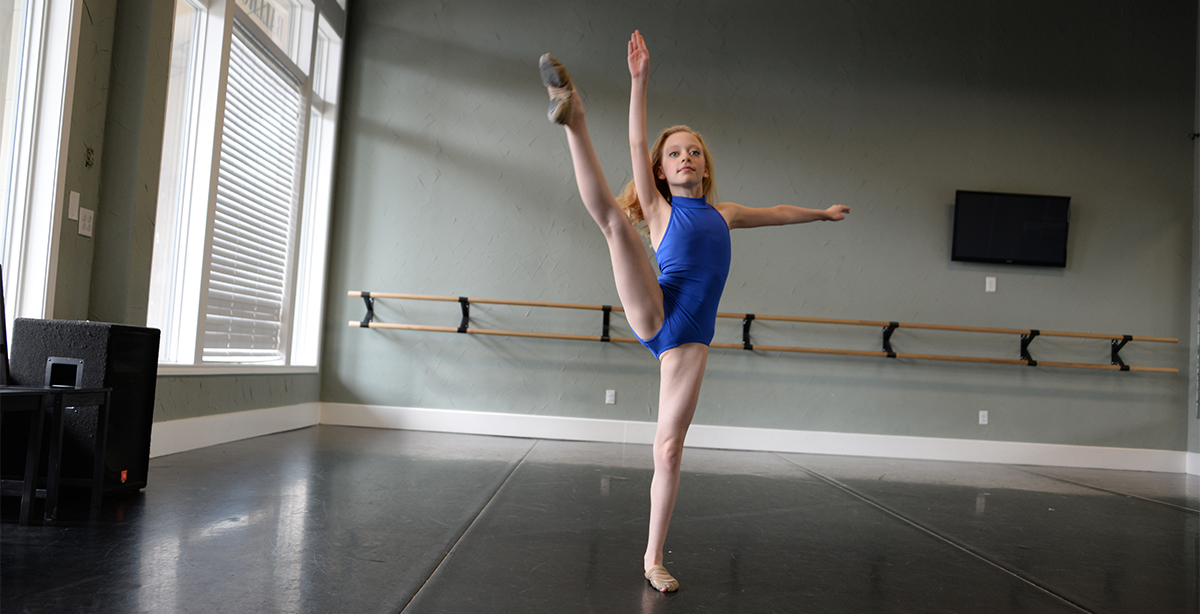Also called hip impingement, FAI is a painful condition that occurs in the hips of adolescents and young adults.
Two bones fit together to make up this “ball and socket” joint. The head of the femur (ball), part of the thigh bone, and the acetabulum (socket), part of the pelvis. Impingement, or pinching, causes pain when the bones in the hip joint pinch the labrum, the soft tissue on the perimeter/edges of the acetabulum.
- Pain in the hip or groin, typically in the front.
- Tenderness and/or swelling of the hip or groin area.
- Stiffness or pain after sitting for long periods of time.
- Aching or pain that worsens with certain activities.
A thorough history and physical examination are used to diagnose a hip impingement. In most cases, X-rays are used to further assess the shape and fit of the bones. If symptoms do not improve or worsen, additional imaging such as an MRI or MR arthrogram may be recommended. An MR arthrogram uses MRI, fluoroscopy and sometimes an injected medication to show the structures inside the joint.
Treatment depends upon the severity of the condition and typically begins with a nonoperative approach which may include:
- Resting from activities that cause pain or changing to activities that do not.
- Physical therapy.
- Proper stretching and warm-up for all activities.
- Non-steroidal anti-inflammatory medications (NSAIDs).
If symptoms persist or worsen, a joint injection may be recommended. Injecting medication into the hip joint can help ease symptoms, improve tolerance and outcomes of physical therapy treatments and confirm the source of the hip pain. Surgery for FAI is typically performed using arthroscopy. This technique uses a small video camera and tools inserted into the joint through very small incisions. In some cases, a different type of surgery may be required. Movement and physical therapy after surgery are important for success.
Overuse injuries like FAI occur with a high volume of training, repetition of certain movements and early specialization in a sport. These suggestions can help to prevent FAI and other similar conditions:
- Avoid sports specialization and play multiple sports throughout high school.
- Emphasize moderation with load and training.
- Encourage free play and lifetime sports like cycling and hiking.
- Avoid year-round participation and encourage weekly and seasonal rest from activities requiring repetitive maximal flexion of the hip.
- Proper warm-up and conditioning for all activities.
Laura Saleem answered some frequently asked questions about:
“Dancers and gymnasts put their hips in extreme postures repeatedly and this can cause changes in the soft tissues and/or the bony structures in the hip joint. As a growing child, the body will go through changes EVERYWHERE. Bones and muscles are just trying to keep up. If there is an imbalance of bone, muscles and ligaments, pain can be quite common and cause greater issues if left untreated.” - Laura Saleem, P.T., M.P.T, O.C.S
“When any athlete begins to have pain, it is important to recognize which moves are painful and the body’s response to the pain (swelling or continued pain after activity greater than one day). Never ignore the pain. Pain during and after activity should be evaluated, often rest is the first line of defense. Though an athlete never wants to stop their sport or activity, a short break at the first sign of pain can prevent significant complications. If the athlete has rested and returned to activity and the painful response continues, it would be best to see a medical provider and physical therapist for appropriate evaluation and treatment.” - Laura Saleem, P.T., M.P.T, O.C.S
Read the full
article here.
In growing children and teens, several tendons attach to apophyses, or growth plates on the pelvis and hip bones. Apophysitis occurs when a specific area of the hip or pelvis becomes inflamed or tender. It typically occurs in adolescents, ages 10-19, who have tight hip and thigh muscles.
Apophyses are made up of soft cells called cartilage. These weaker cells are at a higher risk of injury. Repeated pulling of tendons on an apophysis causes apophysitis, painful inflammation. This commonly occurs during periods of rapid growth and/or increased activity.
Additional factors that can contribute to hip or pelvis apophysitis include:
- Overuse or repetitive use of hip muscles.
- Activities that require extreme hip movements such as dance or gymnastics.
- Activities that involve excessive running and sprinting.
Apophyses are made up of soft cells called cartilage. These weaker cells are at a higher risk of injury.
Repeated pulling of tendons on an apophysis causes apophysitis, painful inflammation. This commonly occurs during periods of rapid growth and/or increased activity.
Additional factors that can contribute to hip or pelvis apophysitis include:
- Overuse or repetitive use of hip muscles.
- Activities that require extreme hip movements such as dance or gymnastics.
- Activities that involve excessive running and sprinting.
This condition may be difficult to prevent.
- Warming up before participating in sports and stretching exercises will reduce stress on the apophysis.
- Limit or vary physical activities, to avoid overtraining and overuse.
- Rest when sore or in pain.
A thorough history and physical examination are used to diagnose apophysitis of the pelvis or hip. In some cases, X-rays may be ordered to evaluate the growth plate and rule out other issues.
Treatment includes modifying activities and providing comfort as needed.
Everyone recovers from an injury at a different rate. If your child is able to perform the activities required for a sport with minimal discomfort and no limp, it is safe to return.
Symptoms will resolve with completion of growth in this area. In time, stronger bone cells replace the soft cartilage cells, but pain may still come and go for months to years. In order to prevent a reoccurrence, it is important to avoid excessive training and to continue the stretching exercises. Pain may come back or worsen during sports or strenuous activities. If needed, start treatment again. Follow up with your provider for symptoms that persist or cannot be managed with rest.
Internal snapping hip (coxa saltans interna) and external snapping hip (coxa saltans externa) is named for a reoccurring, audible pop or snap in the hip joint area that can be heard during certain movements. The sound or feeling is due to the movement of a muscle or tendon over a bony structure in the hip which may or may not be painful. Long-term damage is unlikely, but this may be a correctable problem.
- Reoccurring, audible pop or snap near your groin of the front of your hip.
- Popping or snapping that worsens with activity.
- May or may not have pain near the front of your hip.
Snapping hip may be difficult to prevent. Proper warm-up, stretching exercises, foam-rolling and conditioning may lessen the tension of muscles in the hip.
Snapping hip can be diagnosed with a thorough history and physical exam. In some cases, x-rays and advanced imaging may be ordered to rule out a fracture or other problems with the hip joint.
Treatment is necessary only if pain or discomfort is present. The key treatment is to modify or limit activities that cause pain. Other treatments may include ice, anti-inflammatory medications, and exercise to stretch and strengthen surrounding tissues.













